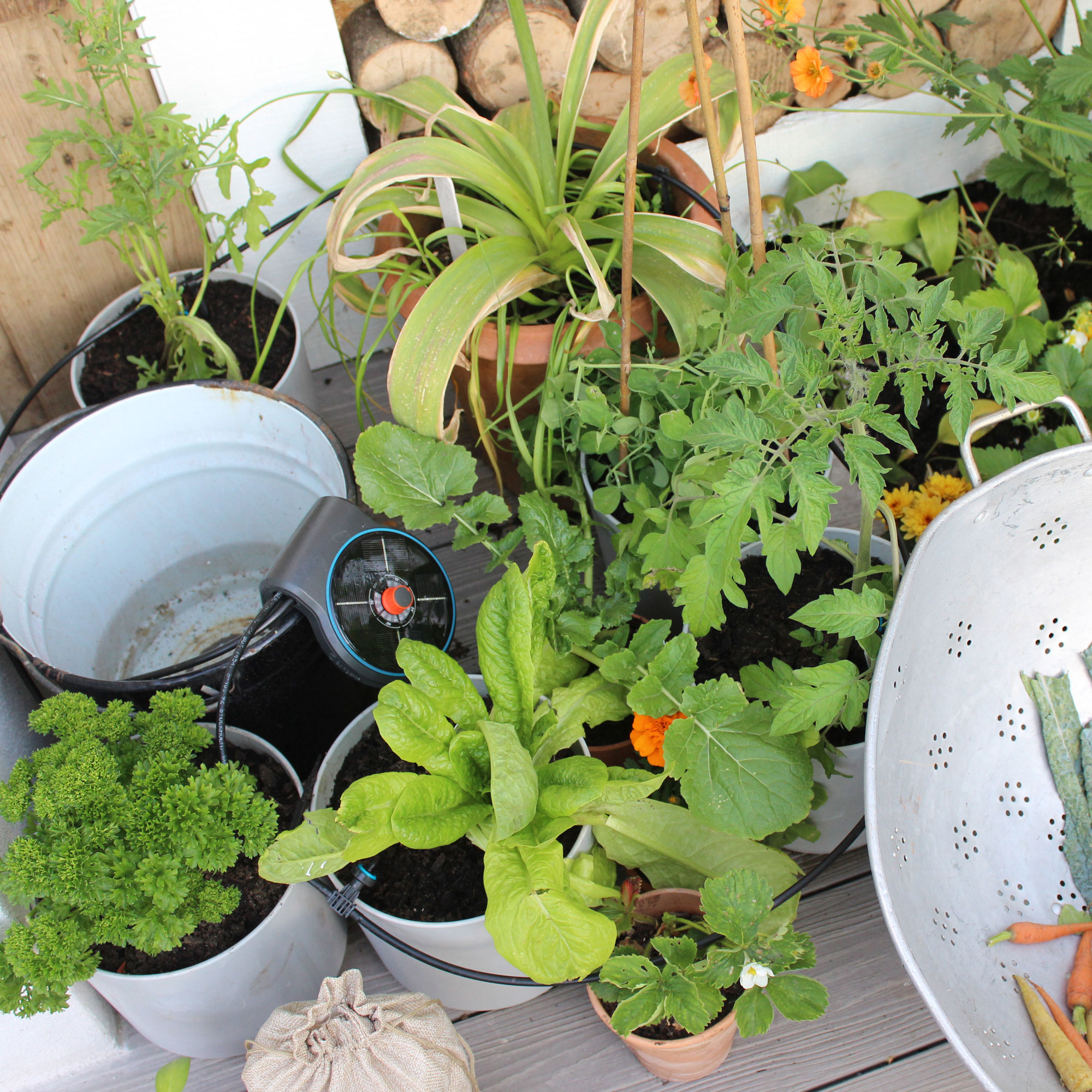
Struggling to keep your garden plants alive? Heading off on holiday and worried you’ll come home to dry, crusty blooms? Well, drip watering can help. But first, you need to understand what drip watering really is.
Sure, watering the garden sounds easy, but there’s a real art to it. You need to know how often to water the garden in hot weather, you need to spot the signs of overwatering, and you need to avoid any garden watering mistakes. After all, the smallest mistake can make a big difference to the health of your plants.
That’s why we’d like to introduce you to drip watering. This handy irrigation system for plants will make gardening easier than ever and even stop weeds from invading your garden. But what is drip watering? And is it good enough for you to ditch the watering can once and for all?
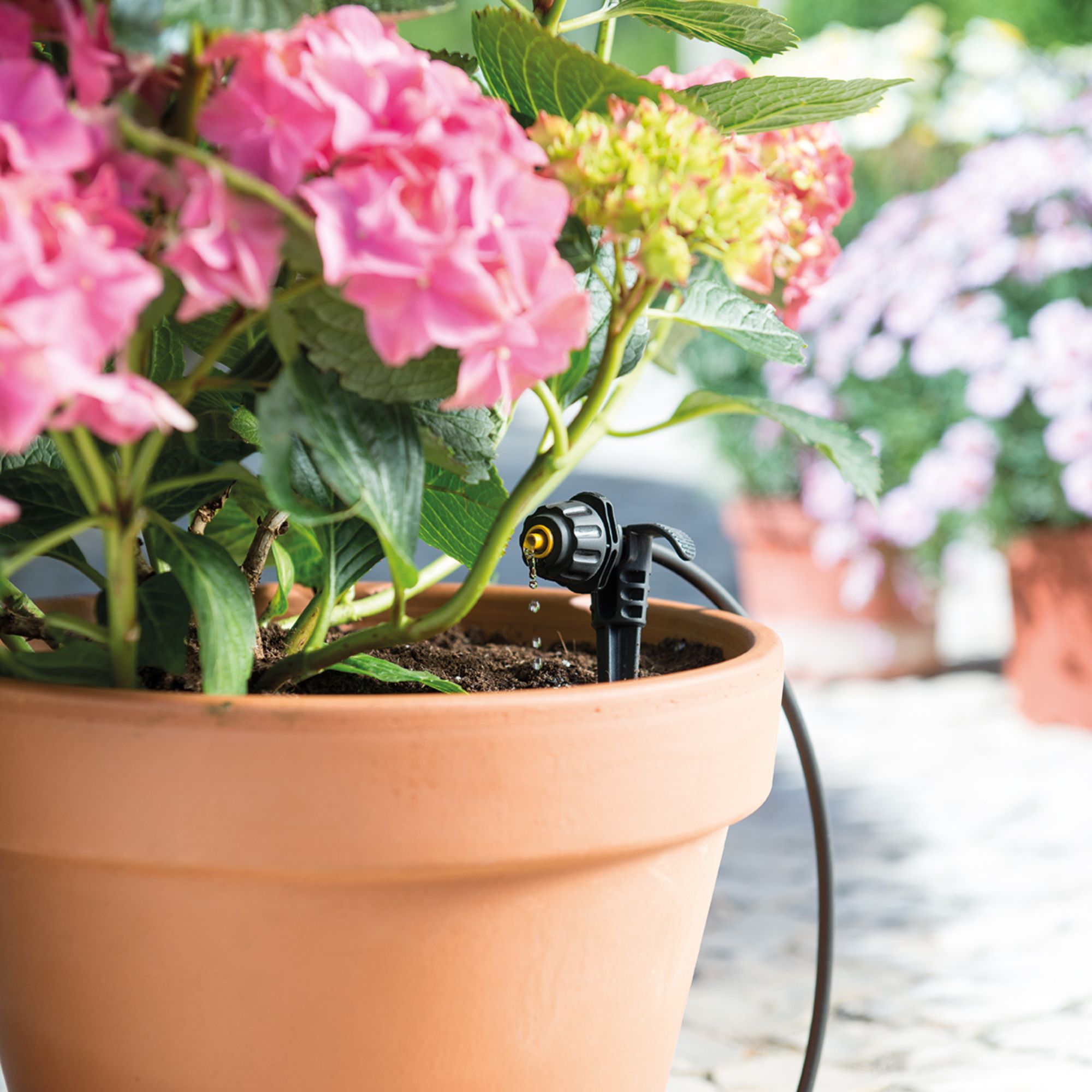
Drip watering: the basics
Essentially, drip watering does exactly what it says on the tin. Instead of watering your plants from above - say, by using a watering can or even a sprinkler system - it waters your plants from ground level or lower.
Sean Lade, Managing Director at Easy Garden Irrigation, explains, ‘Drip watering - also called drip irrigation - is an incredibly efficient way to water plants by delivering the water directly to the roots through a network of pipes, valves, tubing and emitters.’
He adds, ‘By targeting specific areas, a drip watering system allows for automatic and precise watering control, ensuring optimal growth and health for each plant. It essentially helps create a thriving garden with minimal effort!’
Drip watering systems typically come in two different forms. While some systems are more basic (think an upside-down plastic bottle with a spout coming out), others are more advanced and can be connected to your outdoor water tap and spread out across the garden.
Some smart watering systems can also be controlled by apps and timers, and you can even find some drip watering systems that use buckets or the water from water butts for those who don't have an outdoor tap.
Of course, this means that the prices vary. So, it’s important to do your research and figure out which drip irrigation system is best for you, your garden, and your budget.
What are the advantages of drip watering?

1. It saves water
When you water your plants with a watering can or garden hose, it can be hard to know just how much you need to water them. So, most of the time, you simply water until you can see liquid leaking out of the containers or your garden borders look sodden.
Doing this can result in a lot of unnecessary water wastage. And if you want to save money on your water bill, you’re doing yourself a disservice.
Thankfully, a drip watering system can actually help to save water. Jess Thomas, drainage expert at Drainage Central, explains, ‘It delivers water directly to the plant's roots, meaning that water isn't wasted on surrounding areas. It also prevents runoff.’
Not only that, but Sean also adds, ‘Due to their high efficiency, drip irrigation systems are also exempt from UK hosepipe bans, ensuring healthy plants during periods of excess heat and water restrictions.’
2. It prevents under or overwatering
Another advantage of drip watering is that it prevents under or overwatering your plants, which is a common container garden problem. Instead, it should maintain a consistent moisture level that will ensure optimal health.
Jess says, ‘Because you can carefully and precisely control how much water is used, it means that your plants will always be in good health in terms of watering levels.’
Watering from the soil and the base of the plant (rather than watering the whole plant from above with a watering can) can also help to keep the foliage dry. This will prevent the plant from drowning and can even keep common plant diseases like powdery mildew at bay.
3. It can keep weeds at bay
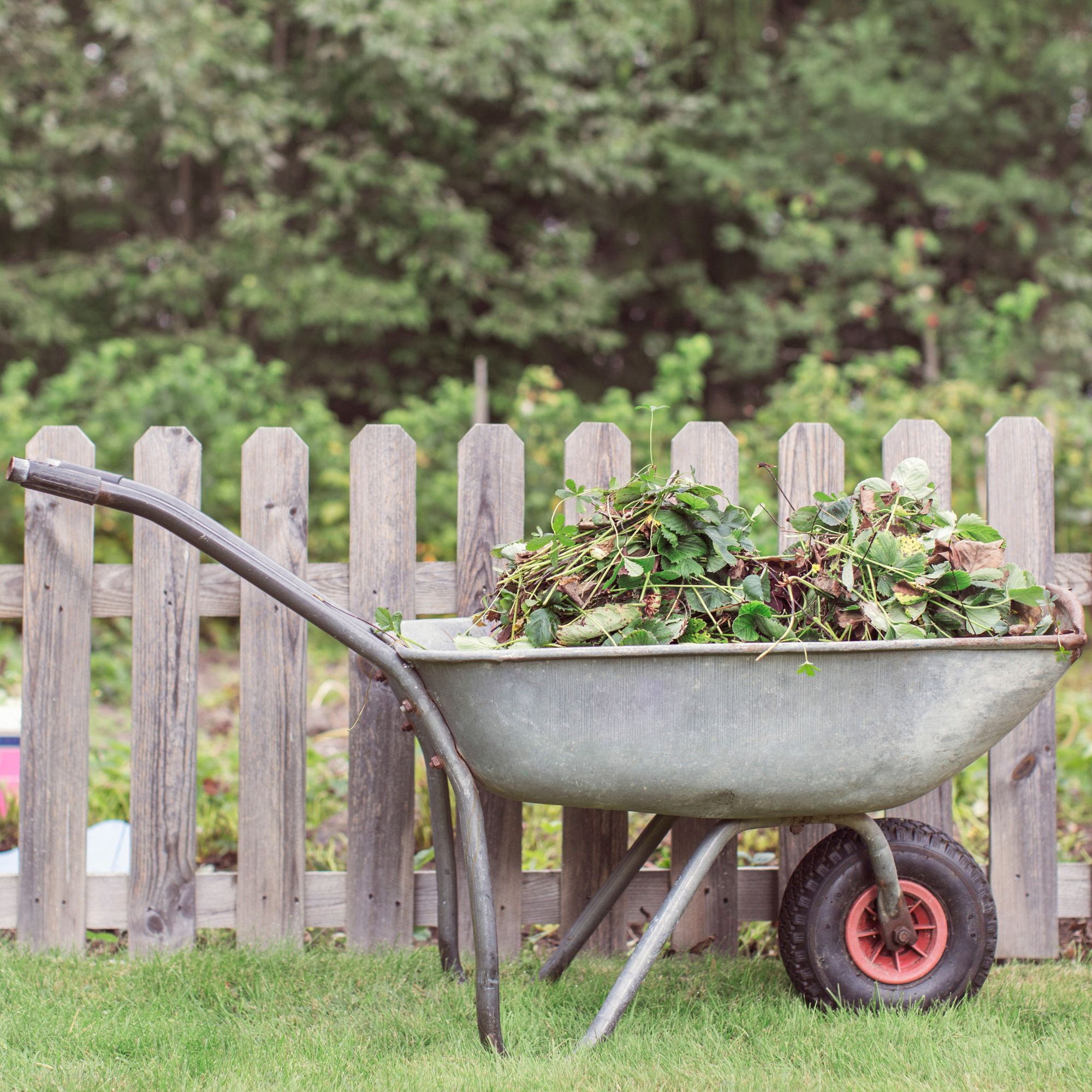
If you spend your days trying to get rid of weeds, you’re not alone. As well as invading your lawn, they can also take over your flower beds and even grow up through your container garden. But did you know that incorrect watering can lead to weeds, too?
In fact, that’s one of the main reasons why you should consider adding a drip irrigation system to your garden. Watering this way can actually stop weeds from growing in the first place.
‘It does this by NOT watering the spaces in between plants, therefore meaning that the weeds can't grow,’ explains Jess. Instead, it focuses on watering the plants and the plants alone.
4. It’s convenient
Large gardens can be difficult to water evenly, especially if you lead a busy life and have limited time to spend in the garden. Alongside this, it can also be hard to maintain a garden watering schedule if you regularly go on holiday or work trips.
That’s where drip watering systems really come into their own. Depending on the type of system you get, you either need to turn on the outdoor tap or keep the manual self-watering systems topped up with water every now and then. So, they’re very convenient and require minimal effort.
If you opt for a smart watering system - like this Eve Aqua Smart Water Controller from Amazon - you could even keep an eye on the weather forecast back home while you’re sunning yourself by the pool and use an app to turn your drip watering system on.
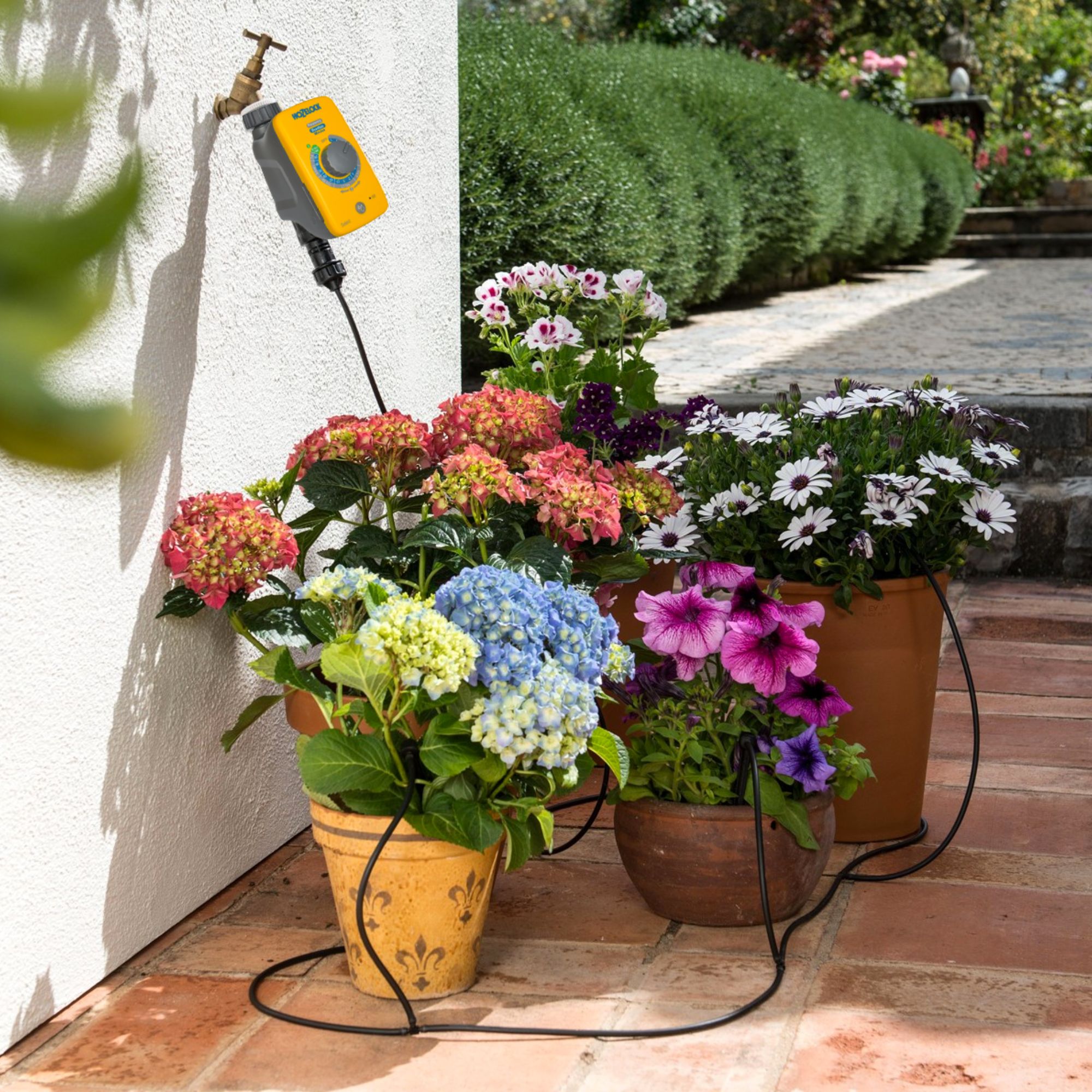
What are the disadvantages of drip watering?
1. It can be costly
If you’re looking for a budget garden idea, drip watering is something you need to seriously consider before taking the plunge. And while you can buy an affordable self-watering drip irrigation system, proper hose systems will set you back a pretty penny.
Jess says, ‘To get the whole system set up can be costly.’ If you opt for a professional-grade irrigation system, you may even have to pay to install it.
However, as we mentioned, a drip irrigation system will only use the water it needs - meaning you’ll save money on your water bill, potentially balancing out the initial cost.
2. It requires planning
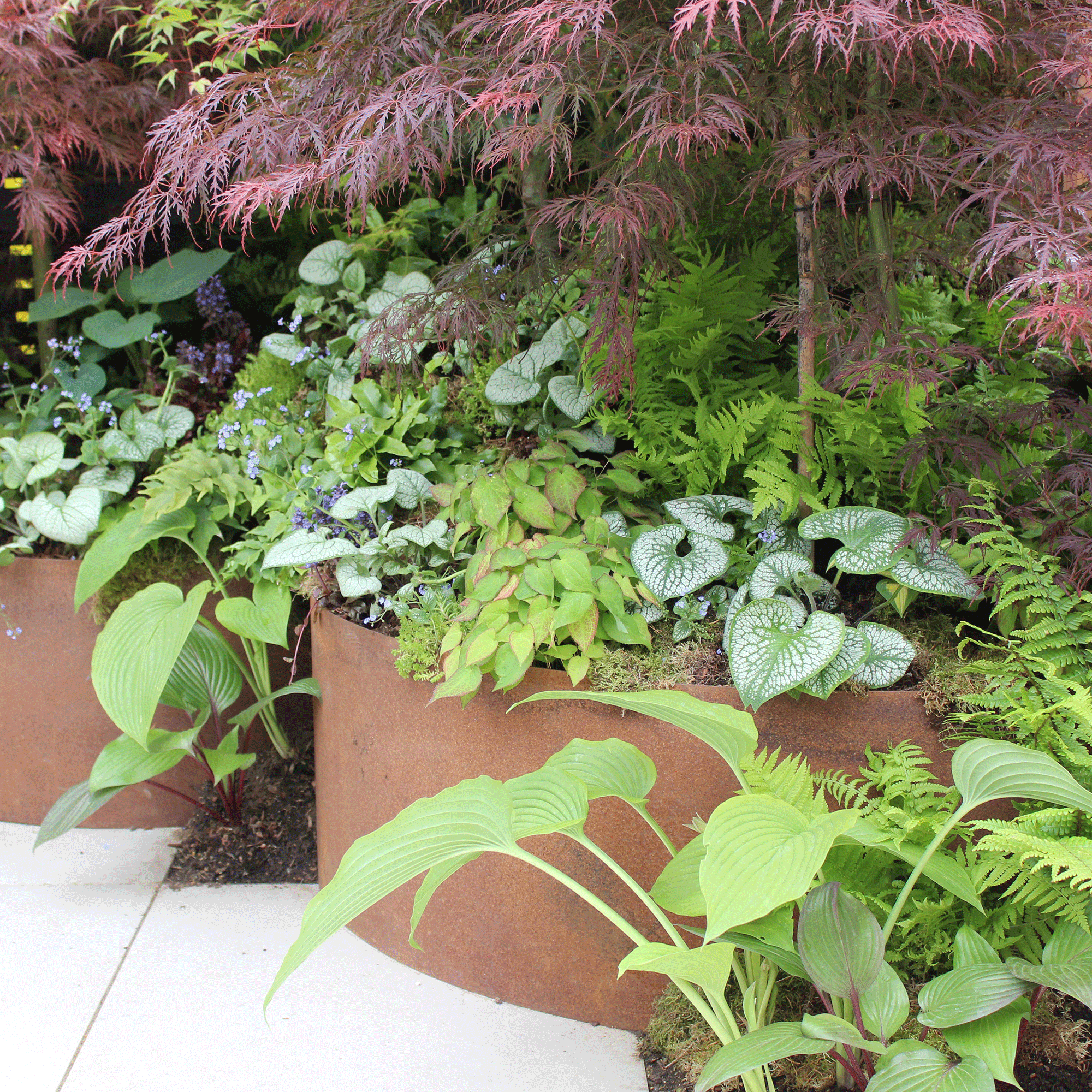
While you may be inclined to buy a drip irrigation system on a whim, it’s important to note that not all gardens need one. Then, you have to decide what kind of system you want to install.
Sean says, ‘Select the appropriate tubing, emitters, and accessories based on the size of your garden and plant needs. Simple emitter systems or soaker hoses work for smaller gardens. Whereas larger gardens might need more complex setups with multiple zones.’
Not only that, but you should also consider the plants in your garden. If your outside space is full of drought-tolerant plants, you shouldn’t need to water them as much - meaning you might not need the convenience of a drip watering system.
If you have flood-proof plants that love to be in waterlogged soil, though, it’s probably best to have one in place to keep them well-watered. This is echoed by Jess, who says, ‘Knowing which plants need what and planning your setup is essential.’
3. Set-up and maintenance can be a hassle
When you water your garden with a watering can or a hose, maintenance is pretty easy. You just need to protect your garden hose during the winter and keep your watering can clean to keep up your watering efforts, and that’s it.
That’s not the case with drip watering, though, and a major disadvantage of drip watering is that setting up and maintaining these systems can be a hassle - especially if you opt for a smarter, more modern system or have a large area that needs to be maintained.
Sean suggests, ‘Set aside maintenance time to regularly check for leaks and clogs or issues that will affect the performance of the drip watering system.’
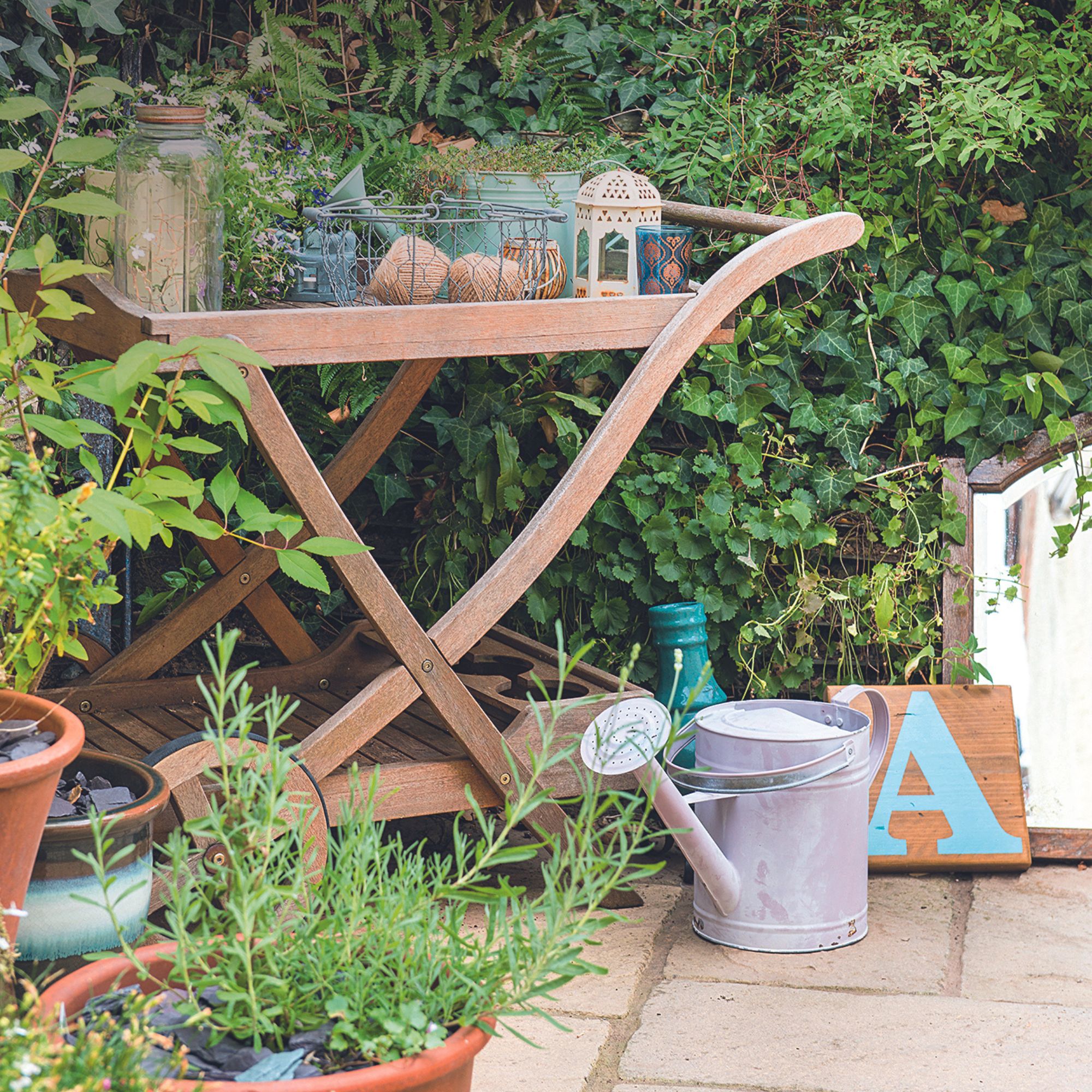
The best drip watering systems - our top picks
If you want to water the plants on a balcony or don't have an outdoor tap, you can use this solar-powered irrigation system to draw water from a bucket instead.
This 135-piece drip irrigation kit really does have everything you need. And with almost 2,000 reviews on Amazon and a 4.2-star rating, we're not the only ones who think it's great.
This drip irrigation system contains everything you need to water a medium-sized garden and can automatically water up to 20 garden containers.
FAQs
Is drip better than sprinkler?
This all depends on your needs. If you’re looking to keep your lawn watered over the summer or have a larger area of plants to cover, a sprinkler can come in handy.
However, drip irrigation systems are much better for those who want to focus on watering their plants and prevent water wastage in the process. That’s because water irrigation systems target the area directly around the plant rather than watering the garden area as a whole.
They also offer a much deeper watering, which is perfect for those who struggle to maintain a watering schedule and want to keep their plants moist. Plus, drip irrigation systems can prevent weed growth while sprinklers encourage it.
Should I run drip irrigation every day?
Ultimately, you should decide how often to run your drip irrigation system by inspecting your garden, the weather forecast, and the plants you want to water.
In most cases, however, you should aim to run drip irrigation around three times a week in the summer (perhaps more during a heatwave, but always remember to water first thing in the morning), twice a week during the spring, and once a week (or less) during the autumn.
It’s unlikely that you’ll need to run drip irrigation during the winter months, but again, this all depends on the weather and your garden at the time.
During these runs, aim to keep your system on for around 20 minutes to get the most out of them.
Now you know what drip watering is, will you be investing in this system for your garden?







